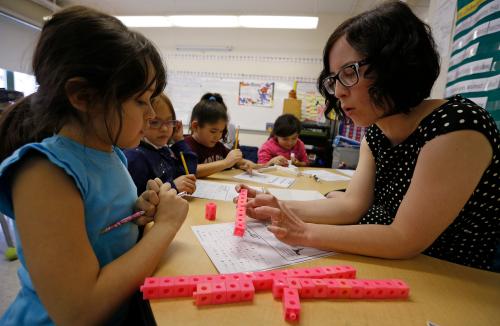It is rare to read an account of the Arab Spring uprisings without a reference to economic injustice. Indeed, it is natural to believe that economic and social injustice fuel, if not cause, all revolutions. For this plausible generalization, the Egyptian revolt of January 2011 is a puzzle. Research shows that, compared to most poor countries, Egypt’s income inequality was low at this time, was not worsening, and its poverty rate was actually falling. Egypt is a prime case of what the World Bank calls “the [Middle East and North Africa (MENA)] inequality puzzle.”
There have been various attempts to solving the puzzle. Extending the conventional household expenditure and income surveys to capture top incomes has raised the Gini index of inequality up by as much as 15 points, but this does not challenge Egypt’s relative position based on standard surveys.
We know that income inequality is one way to measure the deeper meanings of economic injustice, but perhaps not the most relevant one. The capitalist refrain is that unequal incomes are necessary to give individuals the incentive to strive, and, as long as the opportunities for advancement are equal, participants in the competitive economic game are willing to tolerate it. According to this optimistic take on human nature, perception of injustice is less about keeping up with the Jones’s and more about if your children can keep up with theirs.
Thanks to pioneering work by John Roemer, we can actually measure this type of inequality, known as inequality of opportunity, as the share of inequality in a specific outcome—education or income—explained by circumstances beyond a person’s control, such as gender, ethnicity, and family background, to total inequality.
Applying this concept to test scores obtained from Trends in Mathematics and Science Study, Ragui Assaad of the University of Minnesota, Nadia Belhaj-Hassine of the World Bank, and I examined inequality of opportunity in educational achievement for a number of MENA countries, including Egypt.
We were surprised to find that in several MENA countries—including some like Egypt that because of their Arab socialist past should have built a more level playing field in education if not in income generation—that life chances in education depended greatly on to whom and where you were born. In a related measure, educational attainment, Assaad estimates that the chance of enrolling in higher education is 99 percent for a child growing up in an advantaged family compared to 6 percent for a disadvantaged child.
Does inequality of opportunity in education carry over to inequality of opportunity in earnings and consumption? The question is well posed because returns to higher education in Egypt are low, especially in view of the high rate of unemployment of university graduates. In a recent publication, Ragui Assaad, Caroline Krafft, John Roemer, and I try to answer this question.
We analyzed four surveys, from 1988 to 2012, and reached two interesting conclusions. First, the standard index of inequality of opportunity in wages and consumption—which measure the contribution of circumstance to total inequality—fell during this period. Since the list of observed circumstances we took into account is only a subset of all circumstances that matter, the level estimates are biased downward and therefore less interesting. But the fact that the index declined over time seemed inconsistent with the notion that the Egyptian revolt was the result of rising inequality of opportunity that boiled over in January 2011.
Closer examination revealed a different trend, one that is more consistent with this proposition. We divided the heads of household in our samples into four groups based on the education of their parents: the lower class (illiterate parents), the upper class (at least one parent with higher education or both with upper secondary education), and two middle classes in between.
While the overall measure of inequality of opportunity according to standard measures declined over time, in both wage and consumption, “the fortunes of those born to middle class families collapsed toward those born to lower class families, while the gap between the latter and those with an upper class background narrowed.” Both phenomena tend to lower measured inequality of opportunity, but they hide a more important phenomenon.
Those growing up in middle-class families accounted for a large section of the Egyptian population. More than 40 percent of the household heads in our samples (48 percent in 1998) belonged to this category. These families had invested in education hoping to see their children advance on the social scale. Their disappointment in losing ground, while at the same time President Hosni Mubarak’s Egypt was praised for its success in implementing pro-market reforms and in attracting inflow of foreign capital, must be a big part of the average Egyptian’s loss of faith in the Mubarak’s brand of capitalism.
The Brookings Institution is committed to quality, independence, and impact.
We are supported by a diverse array of funders. In line with our values and policies, each Brookings publication represents the sole views of its author(s).







Commentary
Inequality of opportunity in Egypt
July 25, 2017